Dear creative friends,
Welcome to Issue No. 74 of the Studioworks Journal! I’m so delighted to have you here as we embark on a creative journey this February.
With Valentine’s Day on the horizon, we’re invited to reflect on love in all its forms. But instead of focusing on the commercial trappings of the holiday, we’ll turn our attention to the universal expressions of love and its symbols throughout history. From ancient knots and timeless roses to heartfelt letters penned across centuries, love has always found a way to inspire and connect us—far beyond the bounds of romance alone.
As artists, how can we channel these universal themes into our creations? What stories can we tell with symbols, marks, and letters? This month, we’ll explore the rich tapestry of love in art—its beauty, depth, and timeless resonance. Together, let’s celebrate not only the love we give and receive but the love we pour into our creative process itself.
xo,

As humans, we are driven to express ourselves not only to ensure our survival but to enhance our lived experience. Of all the meanings we work so hard to convey, few have garnered more elaborate or disparate avenues of expression than love. From songs to poems to exquisite works of art, there are many ways to say I love you.
Though English has only one word for love, Sanskrit has 96, which captures the experience's elusiveness and nuance. For their part, the Greeks commonly used eight concepts, creating a classification system that helped to contextually define how the term applies to different relationships and emotional states.
However, no matter their language of origin, where one word or several wasn’t enough, many people historically reached for their pens and elaborated their feelings through inspired and heartfelt letters. Join me in finding inspiration for our artistic process by examining enduring symbols of love and diving into some playful voyeurism via famous love letters to explore how we’ve defined, imaged, and expressed love across time.
Hearts, roses, and cupids are only the tip of the iceberg when considering symbols of love in art. Different cultures favor different images, but symbols such as the harp, the maple leaf, and the shell have nearly universal appeal.
According to the Celts, the harp represented a bridge between heaven and earth and represented divine love. In Norse lore, the harp is a ladder assisting the ascent to higher states of love. In addition, the harp was often historically featured in love songs because of its soothing and cascading sounds. The atmospheric piece by Nils Jakob Blommér Idun and Brage depicts the goddess Idun, the Norse goddess of youth and rejuvenation, holding a basket of apples (another symbol of love, desire, and devotion) and looking towards her husband Brage, the god of poetry together creating an image of beauty, creativity, and eternal youth.
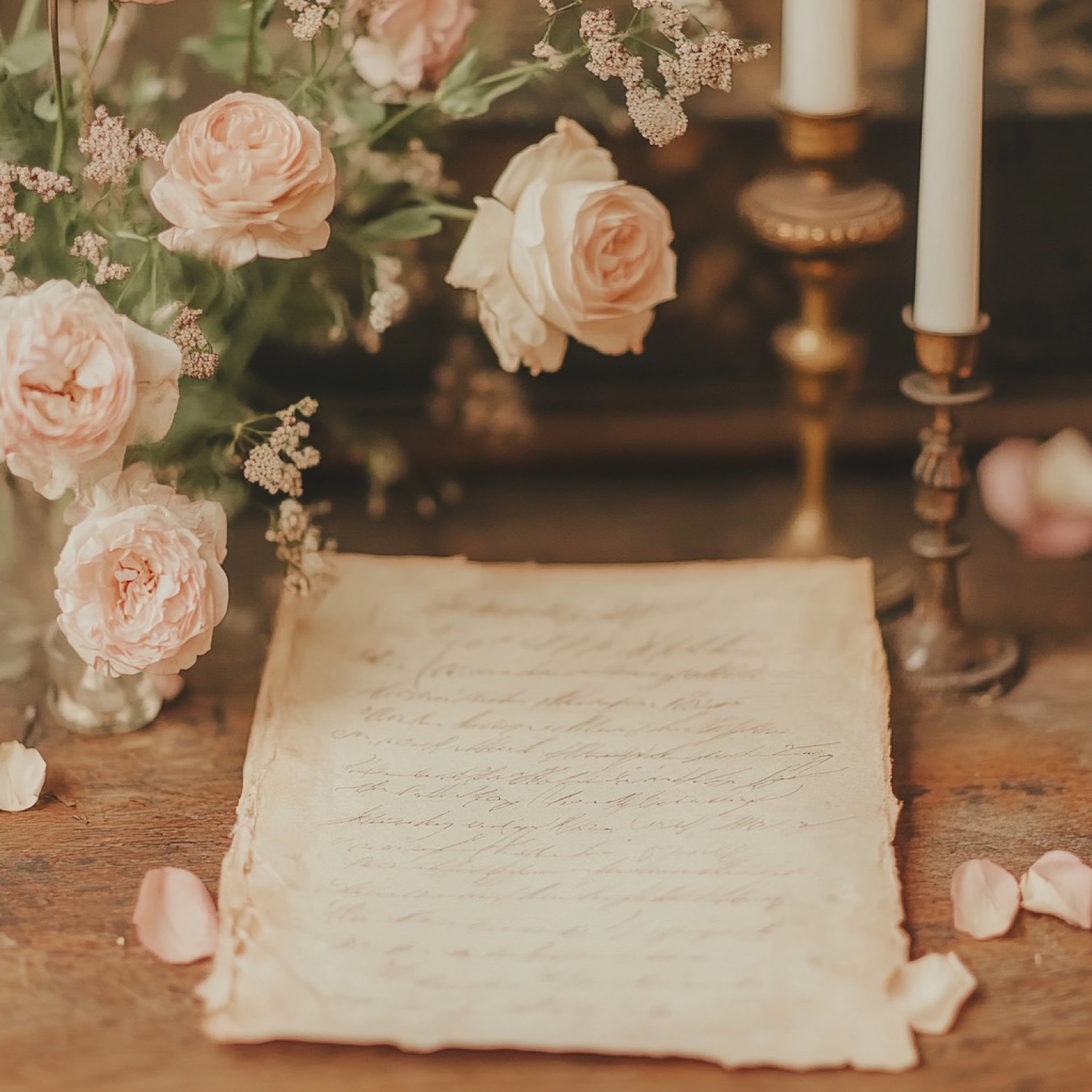

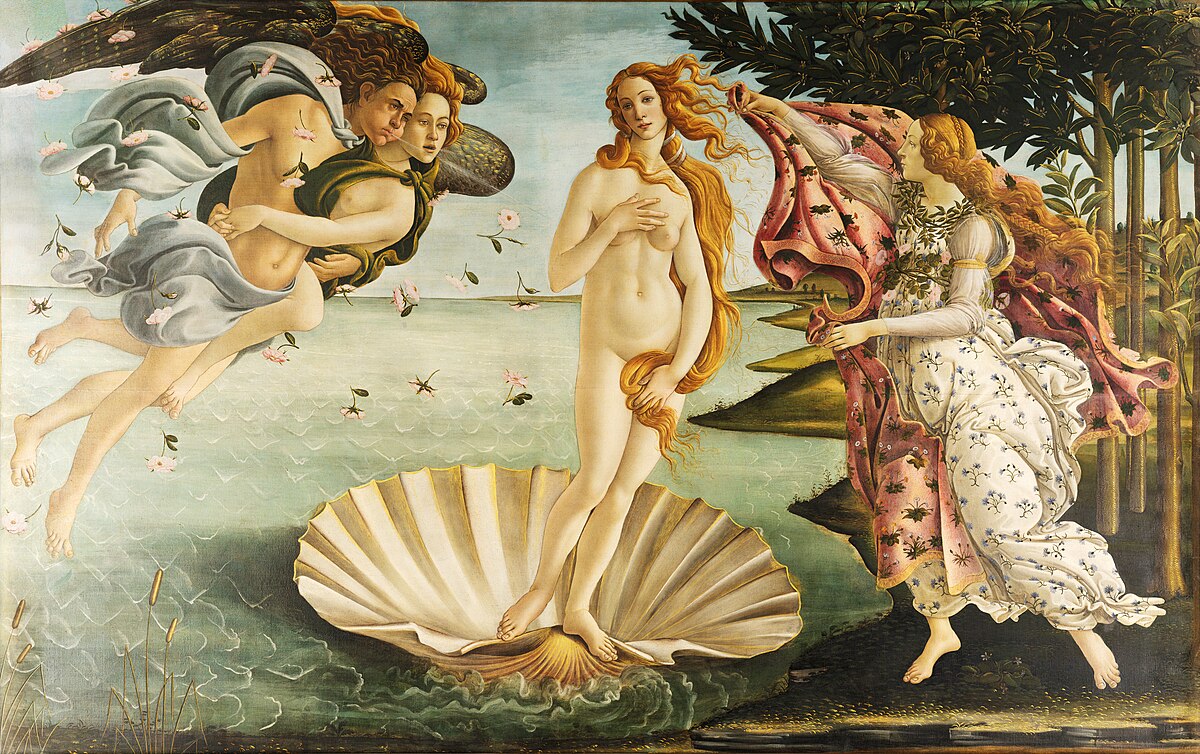
By Sandro Botticelli, 1484-1486
Another ancient symbol of love is the maple leaf. This graceful and seasonally diverse motif held particular significance in China and Japan. The sweet sap became a metaphor for the sweetness and wonder of love and has many beautiful manifestations in art, such as the woodblock print by Hiroshige Maple Trees at Mama.
An additional enduring symbol of love from Greece to India is the shell, particularly the conch. Its association with the goddesses Aphrodite, Lakshmi, and Venus cemented its place in the annals of love symbology. With the mollusk's careful guarding of the pearl within, it’s no wonder that the image became affiliated with protecting the precious. The Botticelli piece, The Birth of Venus, immortalizes this connection with its depiction of Venus emerging from a shell, embodying the birth of beauty and passion.
There are many more symbols of love, many of which can be overlaid with the Greek conceptions of love. Symbols like the Claddagh ring combine layers of meaning. This Irish wedding band, with two hands holding a crowned heart, symbolizes love (eros), loyalty (pragma), and friendship (philia). These overlapping interpretations remind us that love is rarely singular; it is an intricate interplay of emotions.

Love can send people into paroxysms of emotion where words bubble forth like water from a spring that never runs dry. Enter the love letter; herein lies an avenue to express over a page (or several) just how dear is the object of your affection. Unsurprisingly, artists, writers, and musicians have penned some of the most effusive and enduring letters of all time.
A heartfelt and yearning example of this is a letter between the two artists, Florence Baillin Cramer and Konrad Cramer. In it, Florence writes:
“Oh my beloved do you not hear my heart calling you! Stay awake long hours thinking last night, and then dreamed again, a strange dream. It is long since I had sleeping dreams tho waking ones I am never without. I still feel as if it would all suddenly melt away this great happiness but it must not dear heart- it would be too cruel, and I don’t want to suffer so. Come and let me look at you and know that it is real. That I am Florence Baillin and you are my dear Konrad, my sweet playmate and not some magic person that might disappear at any moment.”
Another letter between famed artists Frida Kahlo and Diego Rivera belies the tumult between them, conveying instead their passion:
“Nothing compares to your hands, nothing like the green-gold of your eyes. My body is filled with you for days and days. You are the mirror of the night. The violent flash of lightning. The dampness of the earth. The hollow of your armpits is my shelter. My fingers touch your blood. All my joy is to feel life spring from your flower-fountain that mine keeps to feel all the paths of my nerves which are yours.”
In a letter written to a mysterious woman found in his personal effects, meaning he tragically never sent it, the soulful composer Beethoven wrote the following to his ‘Immortal Beloved’:
“Be calm; for only by calmly considering our lives can we achieve our purpose to live together — be calm — love me — Today — yesterday — what tearful longing for you — for you — you — my life — my all — all good wishes to you — Oh, do continue to love me — never misjudge your lover’s most faithful heart.
ever yours
ever mine
ever ours.”
Not to be outdone, many authors have tried their hand at a letter of love, and some have landed knockout lines. Take the words of Zelda in a letter to Scott Fitzgerald:
“Darling – I love these velvet nights. I’ve never been able to decide … whether I love you most in the eternal classic half-lights where it blends with day or in the full religious fan-fare of mid-night or perhaps in the lux of noon. Anyway, I love you most and you ’phoned me just because you phoned me tonight – I walked on those telephone wires for two hours after holding your love like a parasol to balance me.”

Love is too big an experience to be limited to one word. It requires expansive concepts, symbols, and passionately written letters; even then, the heart can be left yearning for more.
In this age of instant global communication, it can be hard to fathom the agonized yearning of waiting, sometimes for months, as missives traveled manually across land and sea. This delayed gratification, yearning for a letter from your beloved, stirs our sense of longing and potentiates our creativity. It does so in part by evoking art forms such as calligraphy, which infuse letters with mastery and beauty beyond their surface meaning.
When considering the motivation behind crafting symbolically rich and technically exacting love letters, it helps to examine what love means to us. We can do so by exploring the experience of love through the lens of how we define it and what symbols we can use when words aren’t enough. Through symbols and letters, love has been etched into history, inspiring us to create and connect. Join me in exploring how these expressions of love have shaped human creativity and how we might channel them into our own artistic process.

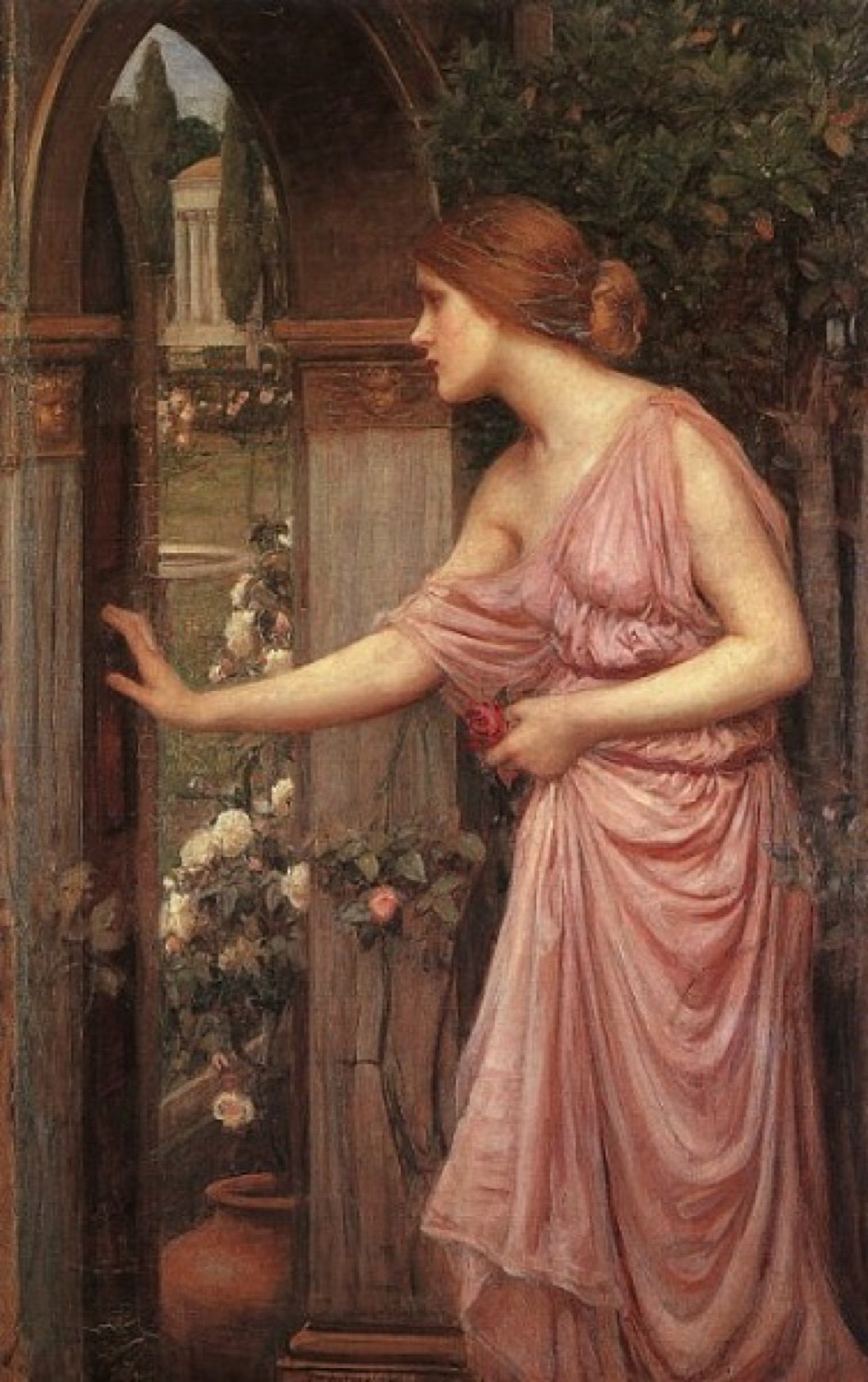
Psyche opening the door to Cupid’s garden
By William Waterhouse, 1903
Love is slippery to define, but attempting to do so has long been a favorite pastime. In typical fashion, Greek philosophers such as Plato and Aristotle sought to give a rational definition of the concepts surrounding the experience and, in the process, gave a rich overview of the types of love we feel.
They are:
Eros- Sensual or romantic love
Philia- The love between friends or general goodwill
Storge- Familial or natural love
Agape- Unconditional or selfless love
Pragma- Practical or pragmatic love based on logic, duty, or obligation
Ludus- Love that is playful, casual, or uncommitted
Mania- Obsessive Love
Philautia- Self-esteem or self-love
As artists, the benefit of looking at love from these various perspectives is that it reminds us of how many different aspects can and do color the emotion (and likewise, our palettes). In addition, it defends us against narrow concepts of love that might lead us to believe that the only authentic version is butterflies in the stomach or sparks flying. An eternal type of love allows room for all the differing manifestations of care and honors each. It also opens more doors for creative expression.
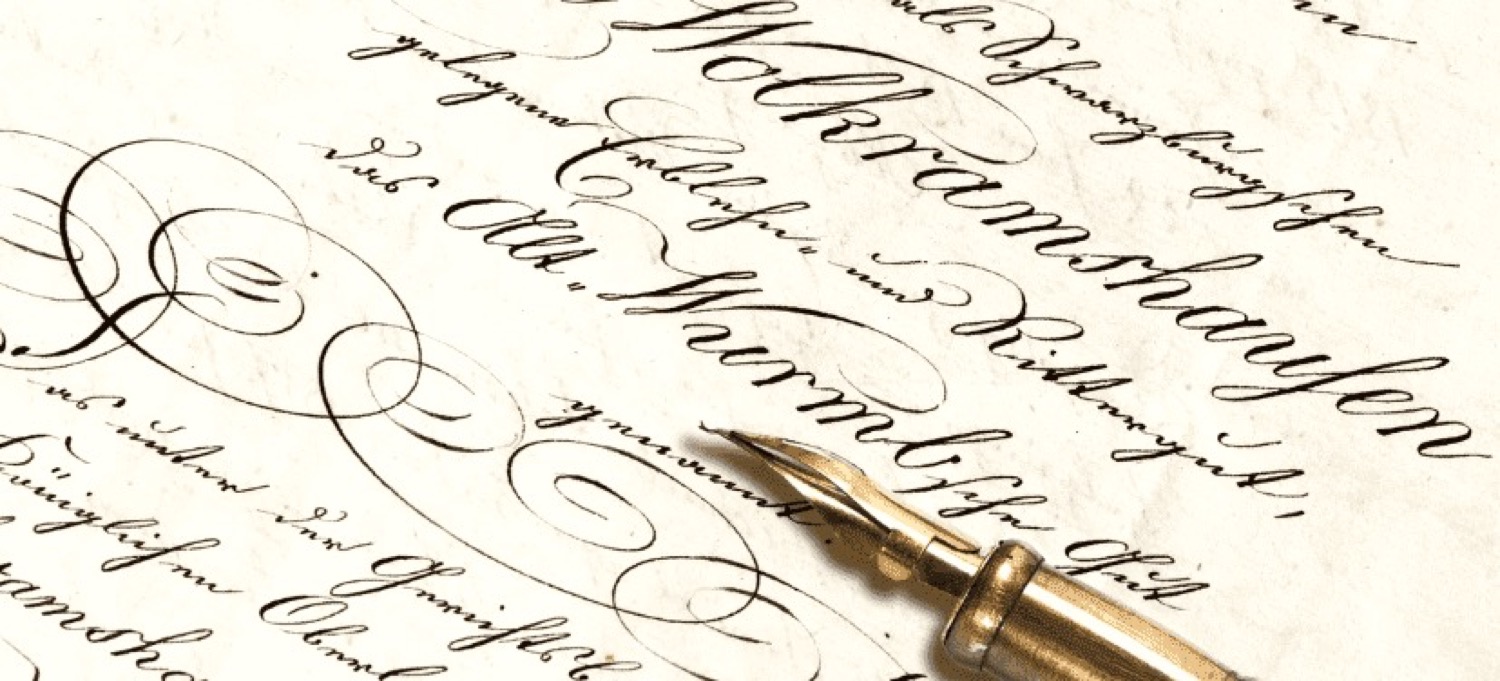
From zen lettering where each character contains its own logos and each stroke is an act of meditation to the Anglo-Celtic book of Kells, whose mind-boggling interlacements were attributed to angelic scribes, humans have long made the crafting of letters an art. In our modern era, nary a wedding invitation or other romantic communique arrives without calligraphy involved. The graceful lines and voluptuous swoops inherently appeal to the romantic in us, connecting us to a rich tradition that has spanned centuries.
As artists, we can tap into the trove of inspiration that antique letters provide by incorporating them into our work or utilizing their organizing principles. For instance, you could use a love letter from the Victorian era as a background for a romantic painting or the calligraphy style of a medieval love poem in a modern piece.
The word calligraphy derives from the Greek words kallos (beauty) and graphein (to write). In this sense, what is written must be beautiful first and foremost, and whether it’s legible is of secondary importance. The key components of beautiful writing are skill, harmony, and composition. Mastering this craft can be a practical act of love or pragma guaranteed to enhance our creative abilities.

Having investigated the meaning of love and some ways we might artfully apply words to a page or canvas, let’s invite symbols to the party. Whether we want to embrace the most obvious imagery (hearts, anyone?) or prefer the more subtle (jasmine perhaps?), there is a symbol for everyone. We can do double duty by choosing an emblem that incorporates multiple layers of meaning. For example, the Celtic love knot without beginning or end represents infinity, a love that is both romantic (eros) and unconditional (agape). Another complicated symbol is the apple, which symbolizes eternal love (agape), fertility (eros), and devotion (philia) in Greek, Irish, Norse, and Chinese mythologies but also represents temptation in the Greek and Christian traditions.
The point is to look for symbols that speak to the kind of love you want to portray. Perhaps you want to express eternal devotion, but doves are too commonly used or pure for your taste. Maybe then, you want to select the raven, which is also a symbol of commitment (ravens mate for life), but it is more complicated (think of the anguished pining for Lanore in Poe’s The Raven). There are no wrong answers here: the world is your oyster (and incidentally, oysters are an aphrodisiac and Aphrodite’s preferred transport).
As artists, we have the freedom to express love in all its forms, and this freedom can be a powerful source of inspiration. We can artistically pen our way into the hearts of our loved ones, whether that love is familial, universal, or romantic. We can look to symbols to express our feelings when words fail us. We can even work in combinations, such as incorporating Celtic Knots into our calligraphy. We can do all this and more by embracing an atmosphere of romance in our work that can become a love letter to art and life.
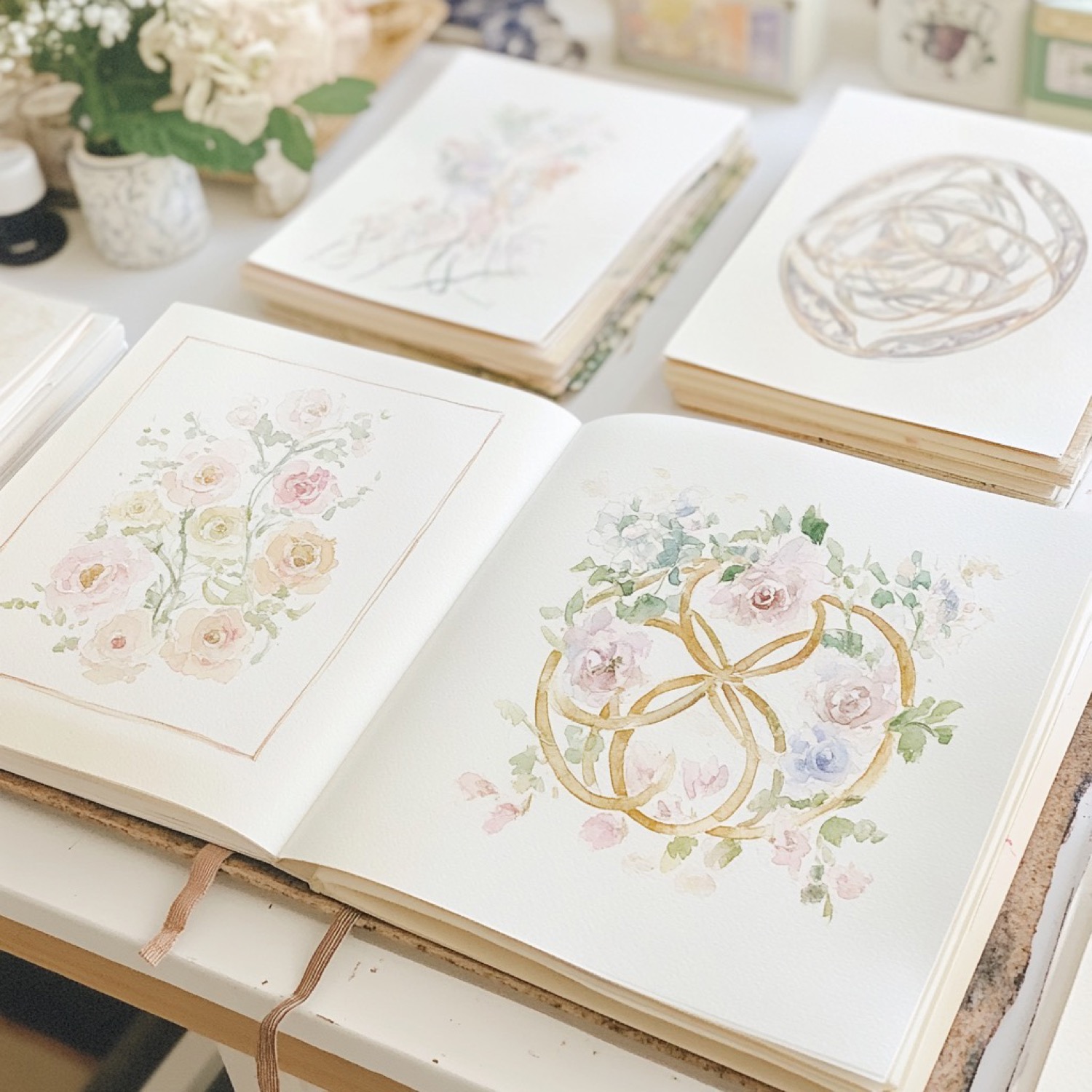
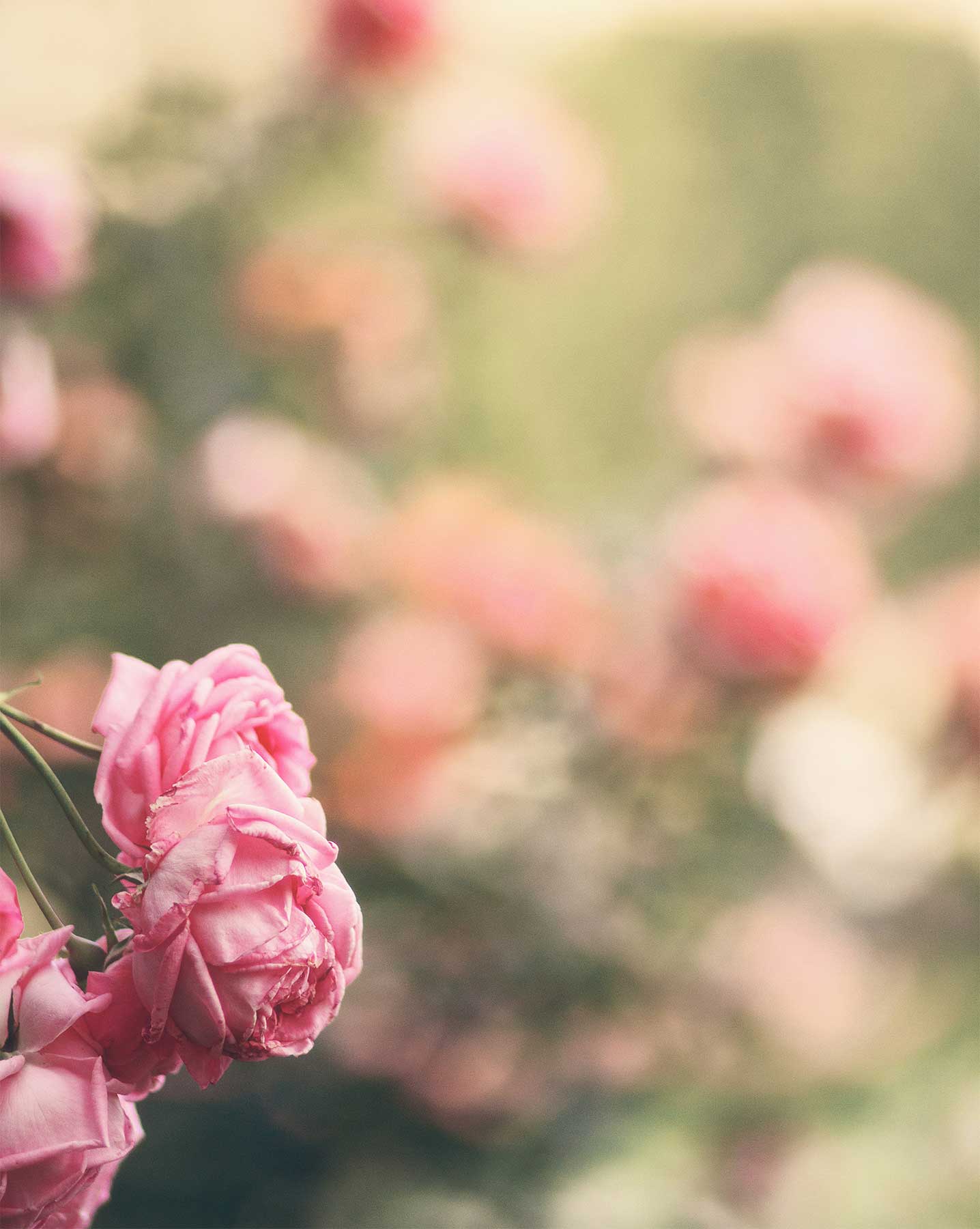
The dictionary definition of devotion is:
Devotion (noun): Love, loyalty, or enthusiasm for a person, activity, or cause.
Devotion: The Heartbeat of the Creative Process
As artists, we often throw words like “passion” and “inspiration” around when talking about our creative lives. But if there’s one word that truly captures the essence of what keeps us coming back to our craft, even on the hardest days, it’s devotion.
Devotion is more than just a fleeting burst of inspiration or a moment of creative joy. It’s the steady heartbeat that keeps us connected to our art, no matter what. It’s about showing up—for the canvas, the journal, the sketchbook—even when the muse is nowhere to be found. Devotion is that deep, unshakable love for creating that pulls us through self-doubt, frustration, and the occasional blank page.
For me, devotion looks a lot like a quiet morning in the studio. The coffee is brewing, the house is still, and it’s just me, my materials, and this sense of something bigger than myself. It’s not always about making something perfect or even making something finished—it’s about the act of making, of pouring myself into every brushstroke or pencil mark, no matter where it leads.
Devotion is also about loyalty—not just to the craft, but to my voice as an artist. It can be so tempting to chase trends or compare myself to others (thank you, Instagram). But I’ve learned that true devotion means staying true to my vision, even when it feels like no one else understands it. That’s not always easy, but it’s always worth it.
There’s a sacredness to devotion, too. In a way, creating feels like a form of worship—an offering to beauty, to emotion, to whatever it is that makes us human. I think about artists like Van Gogh, who painted with such intensity and love for the world around him. His devotion wasn’t about fame or fortune; it was about connection. That’s what I want for my art—to connect, to resonate, to remind someone (even if that someone is just me) that there’s magic in the ordinary.
And yes, devotion also means discipline. Not exactly the most glamorous word, I know. But the truth is, devotion is what keeps me showing up on the days when it feels easier not to. It’s the quiet promise I make to myself and my art: to keep going, even when it feels messy or uncertain. Because every time I honor that promise, I find my way back to why I fell in love with creating in the first place.
So, if you’re feeling stuck or uninspired, I encourage you to lean into devotion. It doesn’t have to look like grand gestures or hours of work—it can be as simple as picking up a pencil and making one small mark. Devotion is in the showing up, in the trying, in the love you pour into what you do.
Because at the end of the day, devotion isn’t about the finished piece—it’s about the relationship we nurture with our creative selves. And that’s where the real magic happens.
Let’s tap into our creative intuition and do some self-reflective work inspired by our theme. Below you will see our month’s Oracle/Tarot card spread. But fear not, if you are not one drawn to using oracle or tarot cards, no worries, just use the accompanying reflective questions as writing prompts for your journals!
Here’s a three-card oracle card spread designed to tap into your creative intuition and our themes. This spread and its journaling prompts encourage reflection on the artist’s inner wisdom, the magic of inspiration, and the journey of trusting intuition in the creative process.
Question: What is fueling my creativity with love right now?
Journaling Prompts:
Question: What symbol or message is calling for my attention in my creative work?
Journaling Prompts:
Question: How can I remain devoted to my creativity and intuition?
Journaling Prompts:

Treat yourself to this wonderful and powerful meditation from one of my favorite meditation creators - Rachel Hillary
Here’s a little more information from Rachel…
Enjoy this heart chakra meditation, set in a beautiful rose garden at sunset. Allow these beautiful roses to heal you, and encourage your heart to gently open and expand. I think this comes naturally as our hearts seem to be being upgraded or elevated, and I’ve felt the higher heart centre opening up more for everyone, merging and flowing with the heart chakra. So this meditation gently creates a blend of these two energies.
I hope you enjoy, sending you love.
lots of love,
Rachel
Each month we will have a positive affirmation. I recommend you print out this affirmation and put it in your sketchbook or somewhere in your studio. Recite the affirmation out loud each time you show up to create. Saying words aloud is powerful and can begin to re-write some of our own limiting beliefs or calm our fears. Try it now…
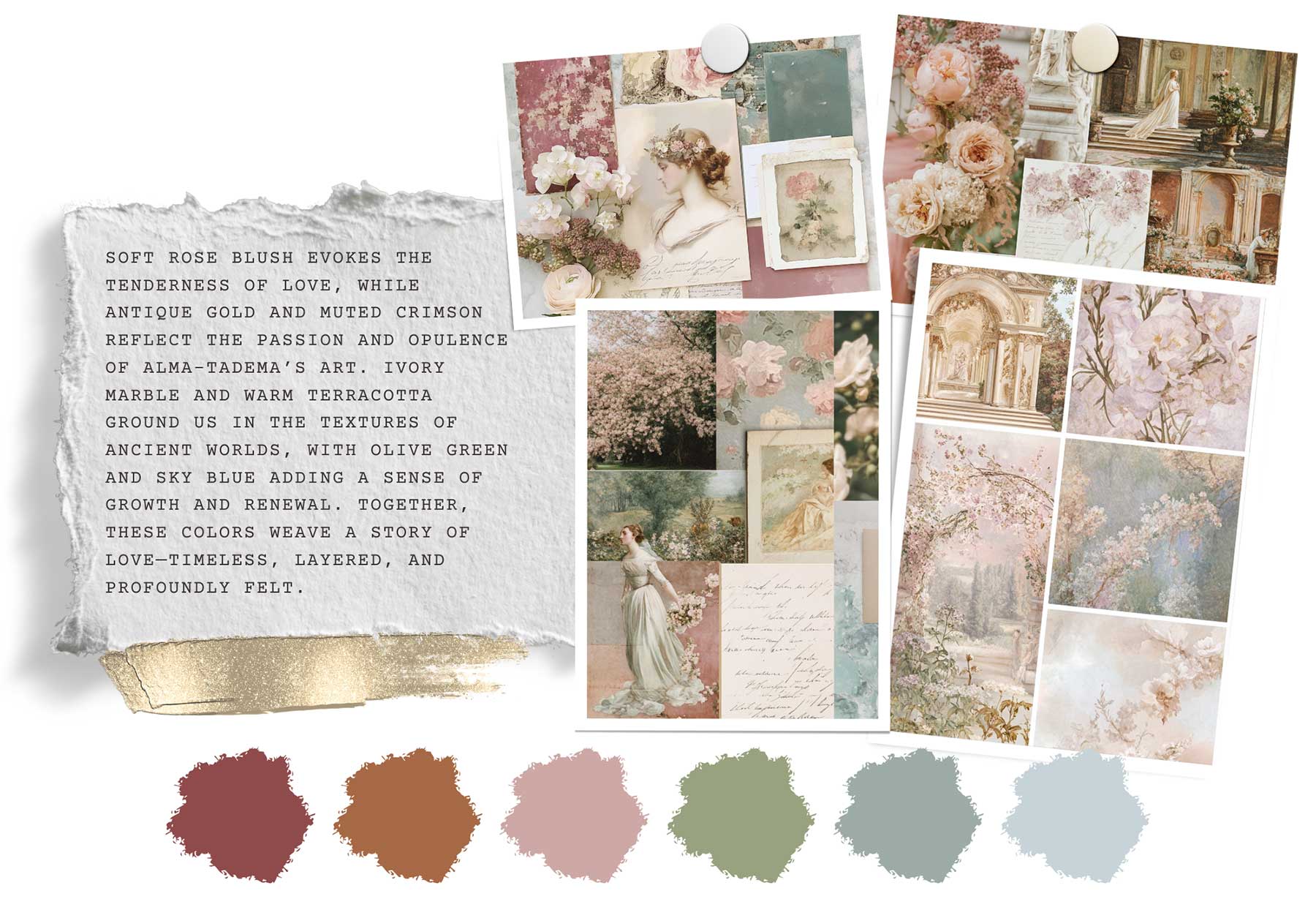
This month, I’ve drawn inspiration from the timeless elegance of Sir Lawrence Alma-Tadema’s (our featured Master artist) classical works and our themes of love and devotion to curate a palette that feels both romantic and deeply connected to history.
Soft rose blush evokes the tenderness and intimacy of love, while antique gold and muted crimson bring depth and passion, echoing the opulence and grandeur of Alma-Tadema’s compositions. Ivory marble and warm terracotta ground the palette in the textures of ancient worlds, while olive green and sky blue add freshness and balance, symbolizing growth and renewal.
Together, these colors tell a story of love in all its forms—timeless, layered, and deeply felt. As we work with this palette, I invite you to explore how color can embody emotion, devotion, and the beauty of connection in your art.
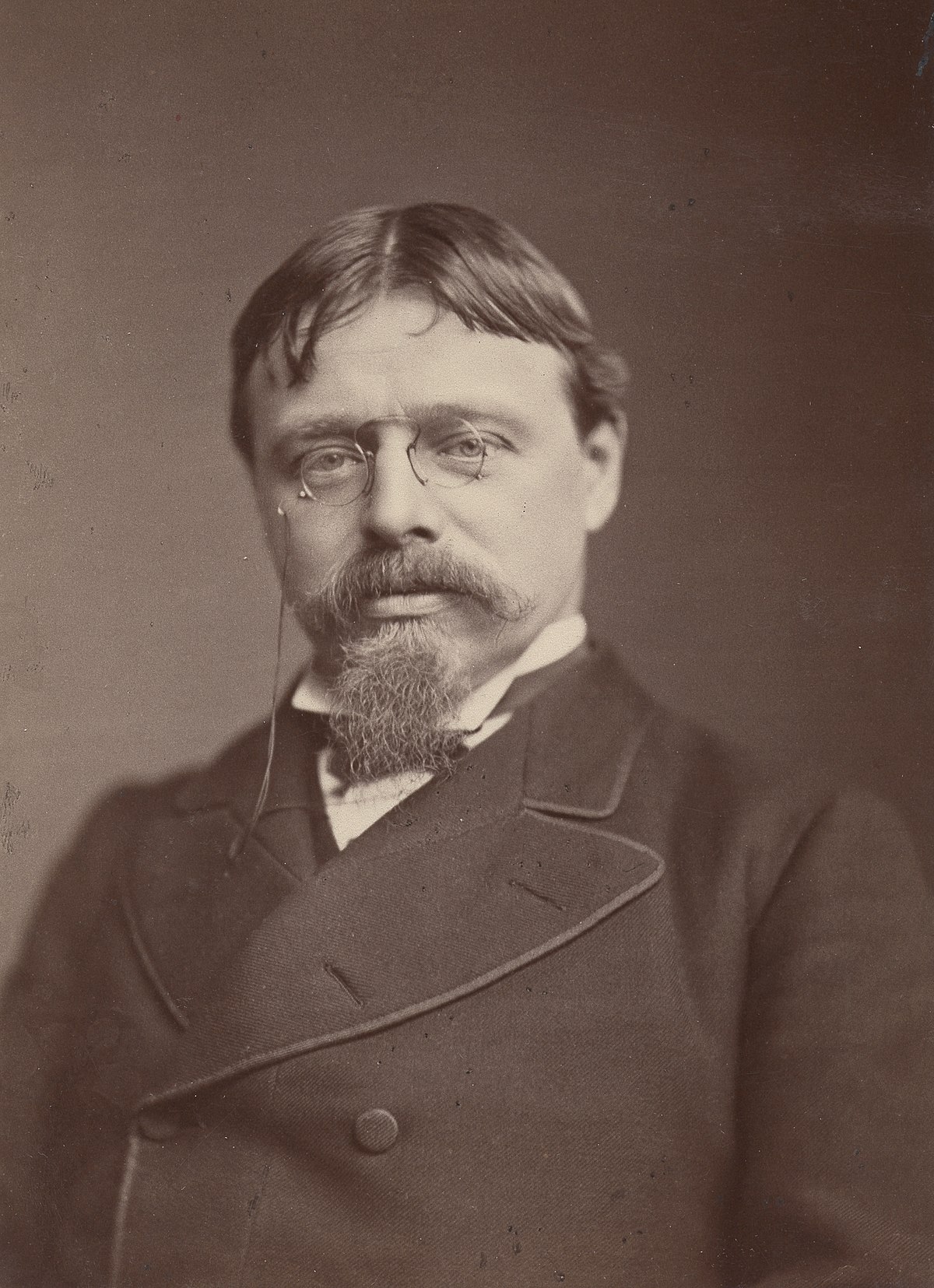
Sir Lawrence Alma-Tadema (1836–1912) was a Dutch-born British painter celebrated for his meticulous depictions of the ancient Roman and Greek worlds. His works, brimming with lush detail and vibrant textures, capture the opulence and intimacy of classical antiquity, making him one of the most renowned and beloved artists of the Victorian era.
Born in Dronrijp, the Netherlands, Alma-Tadema initially trained in historical painting at the Royal Academy of Antwerp. Early in his career, he focused on themes from Merovingian history but soon turned to the classical world after a transformative trip to Italy in 1863. This shift marked the beginning of his artistic legacy, as he devoted his career to reimagining the daily lives, rituals, and grandeur of ancient Rome and Greece.
In 1870, Alma-Tadema moved to England, where he gained immense popularity for his unique ability to combine historical accuracy with romanticized beauty. He became a Royal Academician in 1879 and was knighted in 1899, a rare honor for a painter born outside Britain.

By Sir Lawrence Alma-Tadema, 1888
Alma-Tadema’s paintings are celebrated for their luminous use of light, sumptuous color palettes, and impeccable attention to detail. Among his most iconic works are:
Alma-Tadema’s meticulous recreation of ancient architecture, textiles, and artifacts elevates his works beyond mere paintings, turning them into portals to another time.
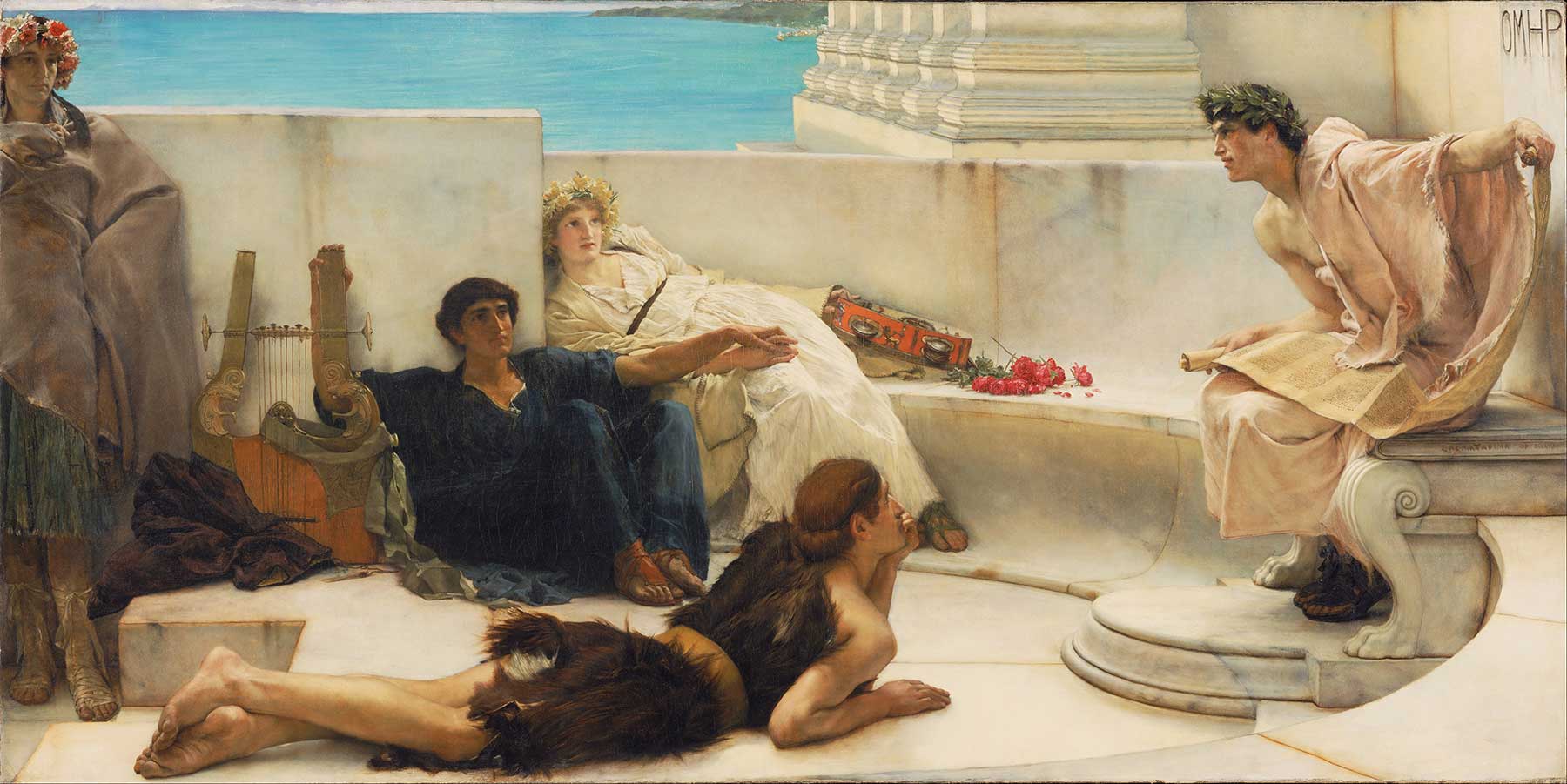
By Sir Lawrence Alma-Tadema, 1885
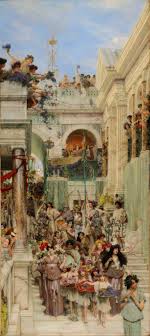
By Sir Lawrence Alma-Tadema, 1894
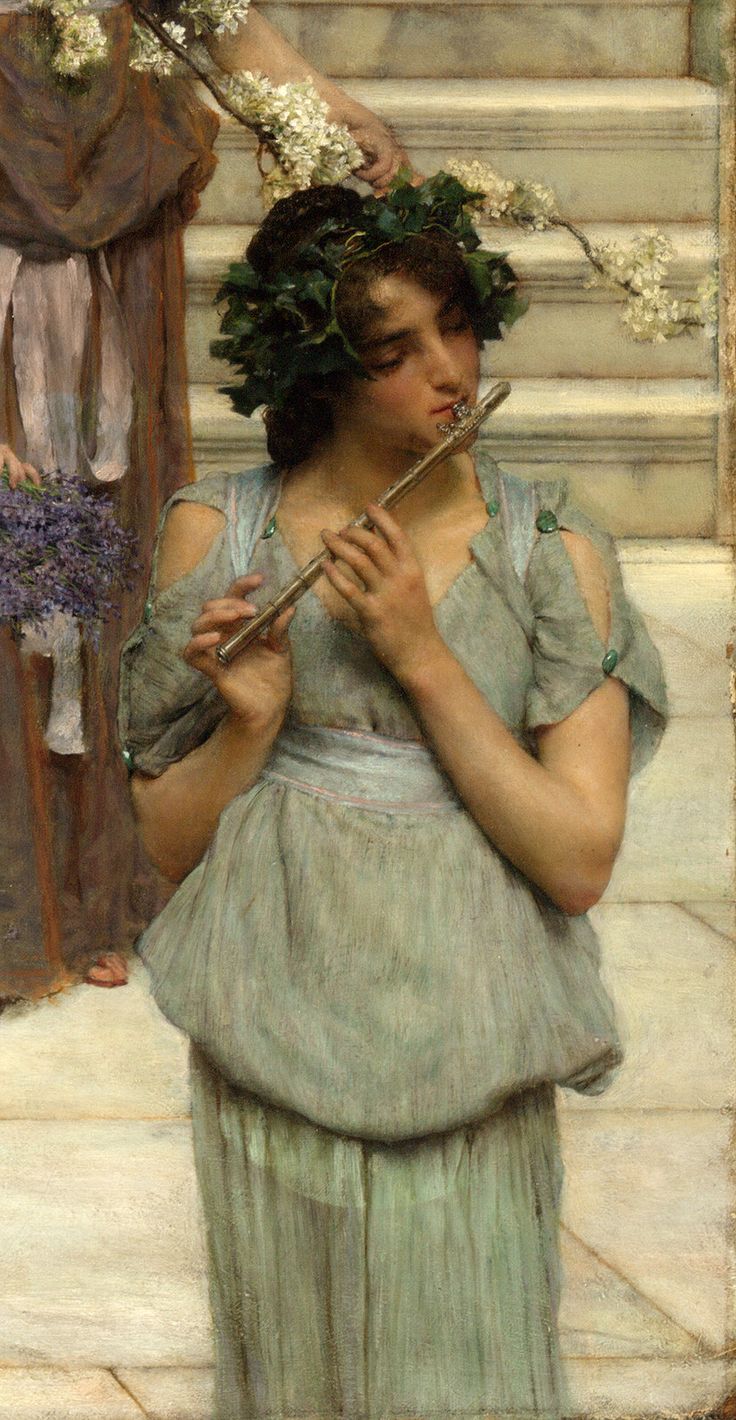
By Sir Lawrence Alma-Tadema, 1894
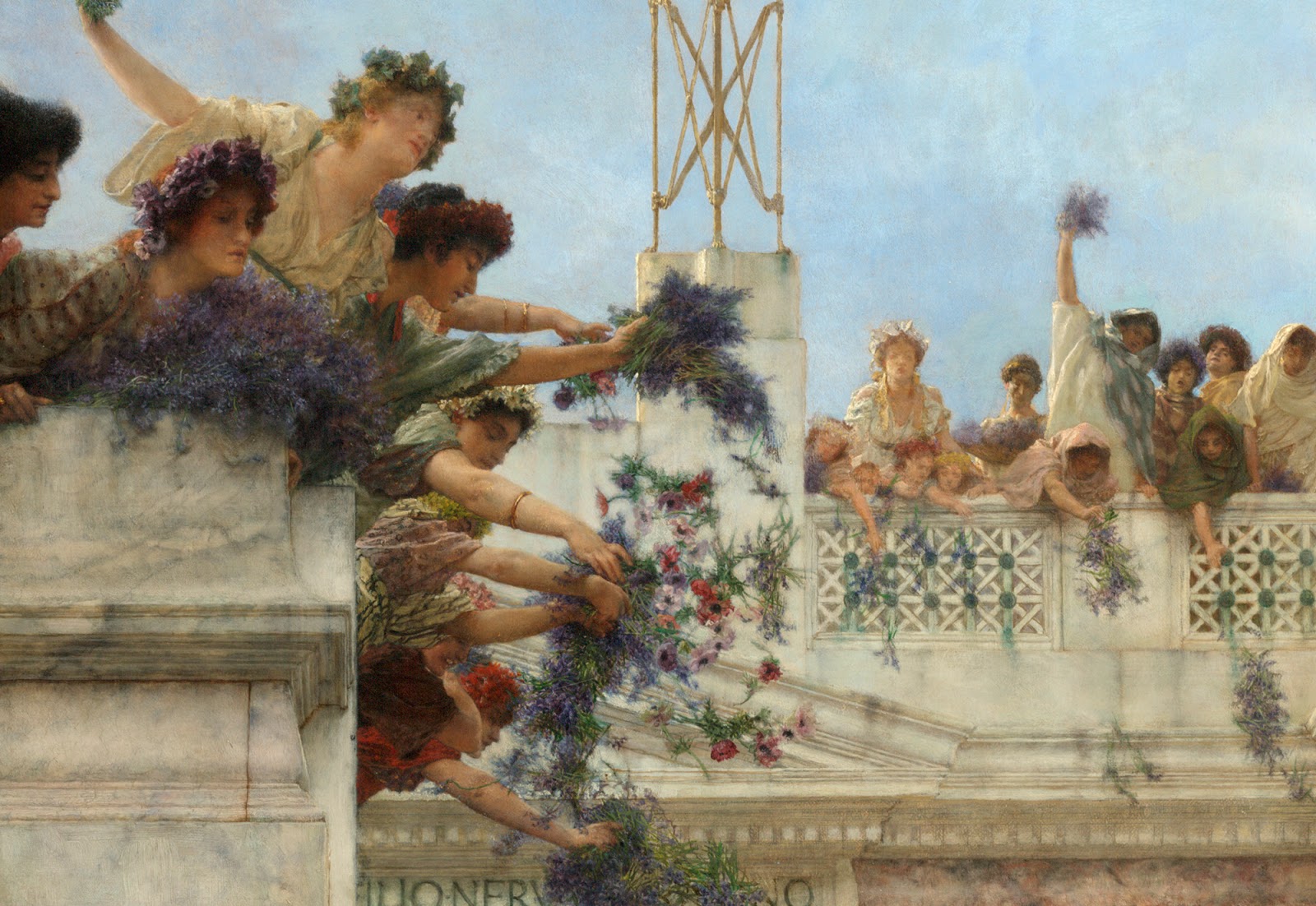
By Sir Lawrence Alma-Tadema, 1894
Alma-Tadema’s work frequently incorporates symbols that resonate with our February themes:
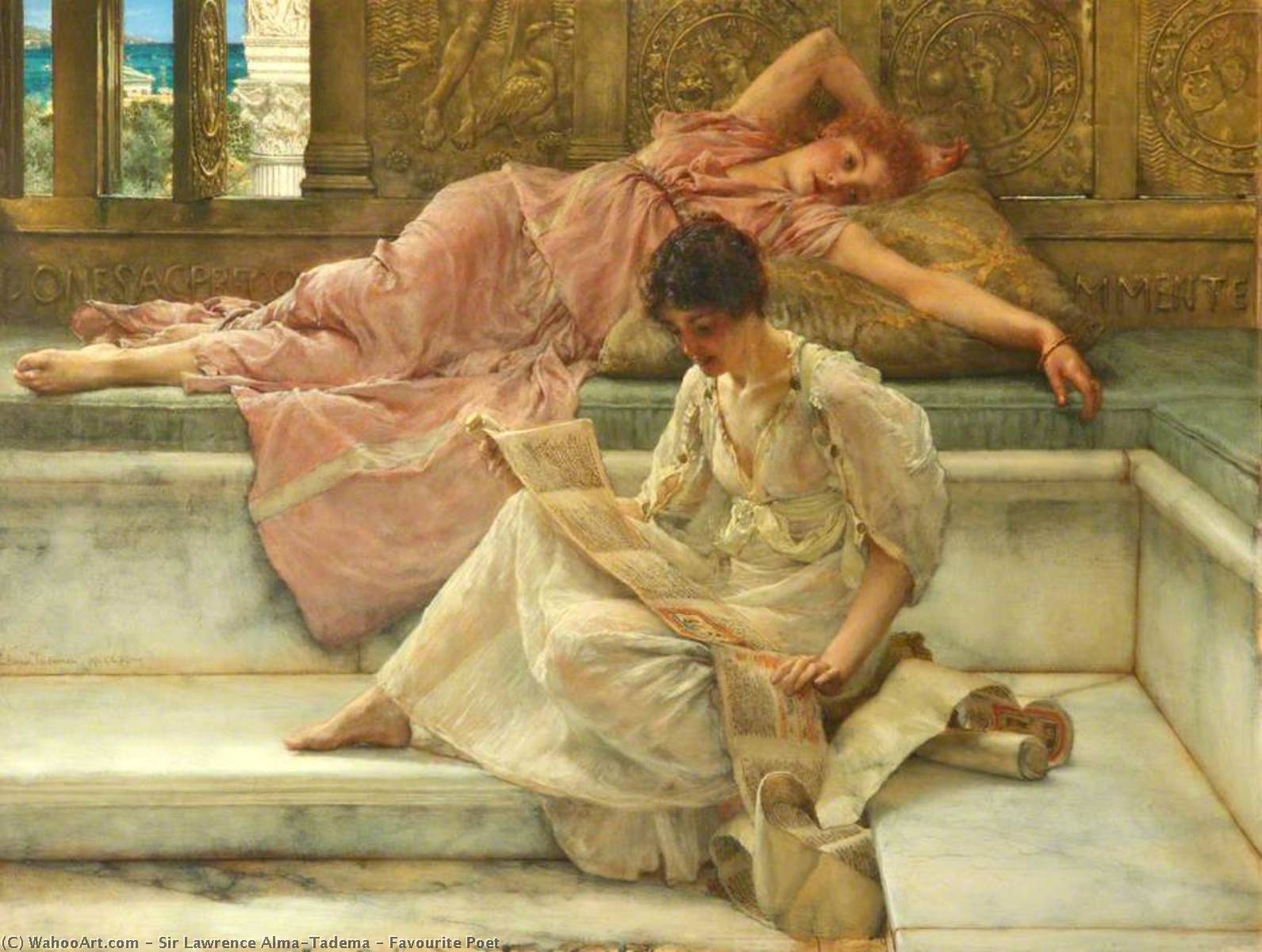
By Sir Lawrence Alma-Tadema, 1888
Alma-Tadema’s art continues to inspire modern audiences with its romanticized view of love and human connection. His work invites us to reflect on the beauty of devotion—not only in relationships but also in the creative process itself. Through his exquisite attention to detail and the reverence with which he approached his craft, Alma-Tadema reminds us that art, like love, is a celebration of the timeless and universal.
Let his legacy and the themes of his work inspire you this month as you create with heart, intention, and a deep sense of devotion.
Prompt: Create a visual vocabulary of love by exploring universal symbols and personal interpretations.


Prompt: Illustrate a scene or portrait that captures the timeless nature of love and devotion, inspired by Alma-Tadema’s classical settings and style.
Objective: Create a layered composition that symbolizes the multifaceted nature of love and devotion.
Prompt:
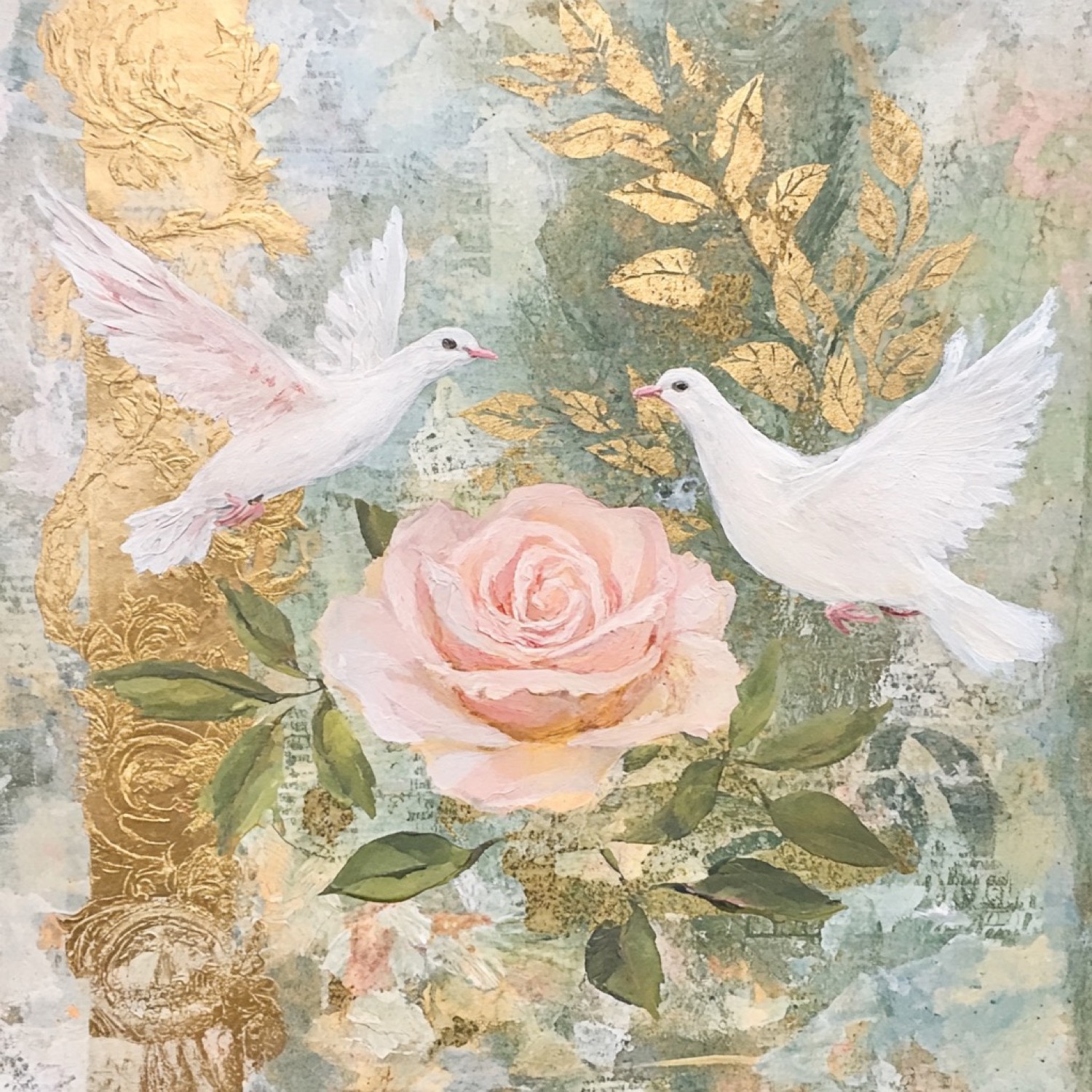
Discover the beauty of connection and emotion in Tender Togetherness, a heartfelt exploration of expressive portraiture and storytelling through art. This class invites you to create unique, deeply personal pieces that capture the tenderness of relationships, from the bond between mother and child to the sisterhood of shared experiences.
Through a combination of painting, mixed media, and sculptural elements, students will explore imaginative storytelling and expressive techniques that bring emotion to the canvas. Whether through evocative portraits or delicate clay creations, the focus remains on conveying intimacy and love in each piece.
Join this creative journey and uncover the tender stories waiting to emerge from within. Embrace the process, connect with your artistic voice, and bring warmth and emotion to your work.
You can also listen to this month’s issue of the Studioworks journal. I find I love listening to books, podcasts and music while I draw, paint or go on a long walk. Enjoy.

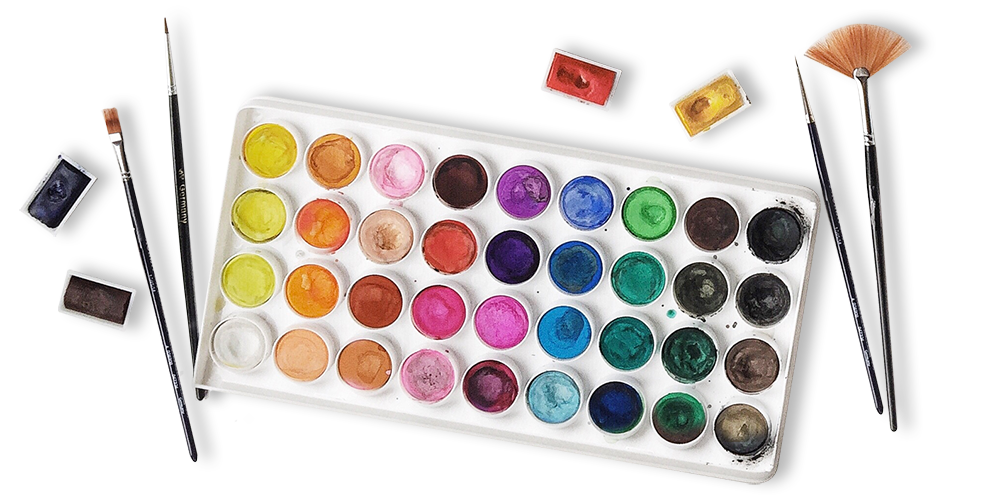
One of my favorite things to do is to curate inspiration. From Pinterest boards to books, resources, playlists and more - I love to share anything that might facilitate learning, expansion, and sparks of curiosity! Being an artist, we naturally crave these things so here are some of this month’s picks from me to you.
I had so much fun curating this list. I hope you enjoy!!
Here are just a few of our fantastic classes! I highly recommend checking them out if you haven’t already. Enjoy!